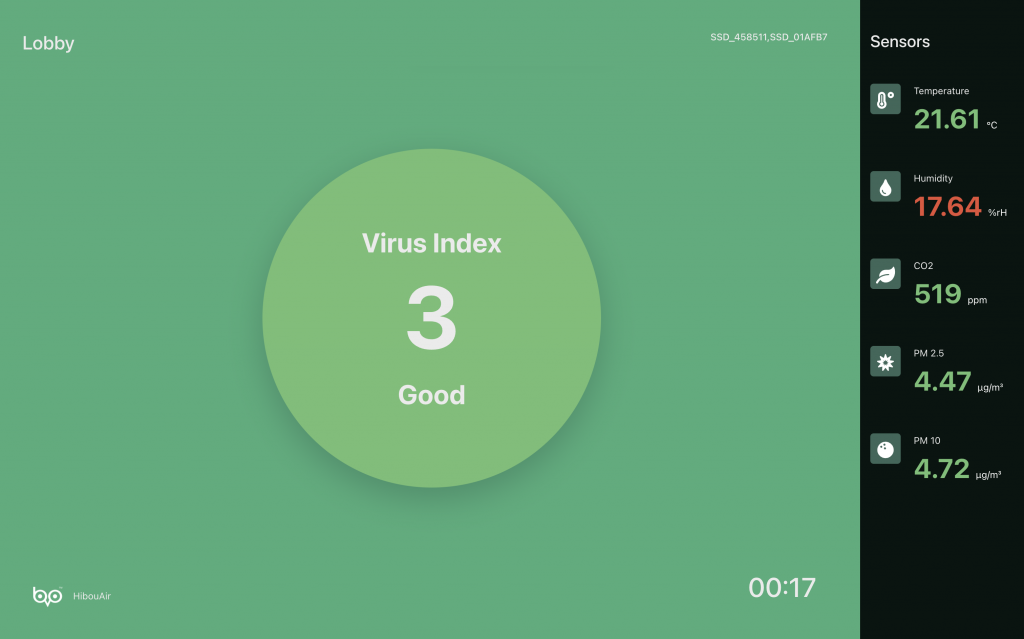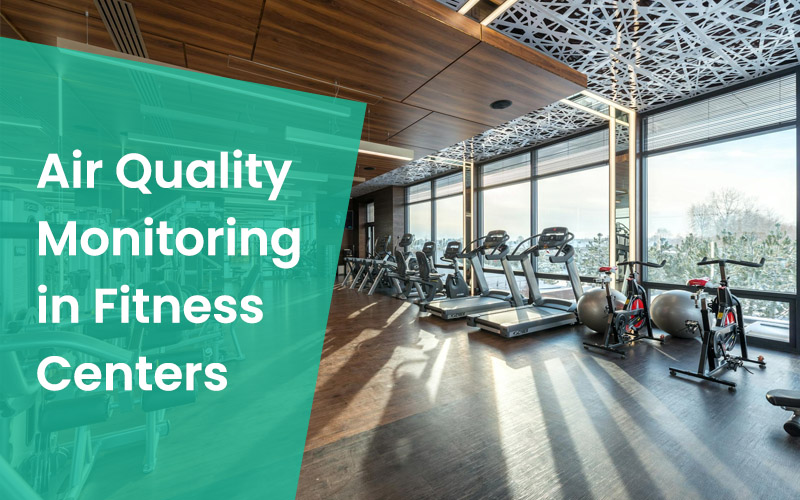Air Quality Monitoring in Fitness Centers: Enhancing Comfort and Performance
Indoor physical activities such as gym workouts are increasingly popular as people strive to maintain a healthy lifestyle. However, the quality of air in fitness centers plays a significant role in the comfort, performance, and overall well-being of individuals. Poor air quality can lead to discomfort, health issues, and reduced motivation, while clean air can enhance performance and ensure a safer workout environment. With the rise of technology, monitoring air quality in fitness centers has become easier, and devices like HibouAir offer a smart solution to ensure optimal air conditions.
Indoor vs. Outdoor Physical Activity
Physical activity can be categorized into two types: indoor and outdoor. While outdoor workouts provide fresh air and natural ventilation, indoor activities, such as those in fitness centers, are often confined to enclosed spaces where air circulation may be inadequate. In these indoor environments, poor air quality can become an issue, especially when ventilation systems fail to effectively remove pollutants like carbon dioxide (CO2), particulate matter (PM), volatile organic compounds (VOCs), and humidity, among others.
How Clean Air Enhances Physical Activity Comfort
Clean air plays a critical role in the comfort and effectiveness of physical activity. Here are several ways in which improved air quality can benefit fitness center patrons:
- Better Oxygen Intake: Proper oxygen levels in the air support efficient respiration and muscle performance. High CO2 levels, often caused by poor ventilation, can cause shortness of breath, fatigue, and lower workout endurance.
- Reduced Irritation and Discomfort: Poor air quality, with high levels of PM 2.5, VOCs, and other pollutants, can cause respiratory irritation, headaches, and discomfort, reducing the overall exercise experience.
- Lower Risk of Infections: Gyms can be a breeding ground for viruses, bacteria, and mold, especially in poorly ventilated areas. Clean air reduces the transmission of airborne diseases and allergens, providing a healthier workout environment.
- Enhanced Performance: Optimal air quality leads to higher energy levels and mental clarity, which allows gym-goers to maintain better focus and achieve better workout results.
Factors Contributing to Poor Air Quality in Fitness Centers
Several factors contribute to poor air quality in gyms, some of which may not be immediately noticeable:
- High Occupancy: Fitness centers are often packed with people, especially during peak hours. High occupancy increases CO2 levels, making the environment stuffy and uncomfortable.
- Dust and Particulates: The constant movement of people, along with dust particles from floors and equipment, can lead to an increase in PM 1.0, PM 2.5, and PM 10 levels, which can trigger allergies and breathing problems.
- VOC Emissions: Gyms often use cleaning agents, sanitizers, and equipment that emit VOCs. These compounds can accumulate and cause eye, nose, and throat irritation, headaches, and fatigue.
- Humidity and Temperature Imbalance: With excessive sweating and moisture buildup from workout equipment, gyms can suffer from high humidity levels, which create an uncomfortable and unhealthy environment.
- Poor Ventilation: Fitness centers without a proper ventilation system or HVAC (Heating, Ventilation, and Air Conditioning) units can struggle to maintain healthy air quality, allowing pollutants to build up.
Improving Air Quality in Fitness Centers
To combat the negative effects of poor air quality in fitness centers, it’s essential to adopt air quality monitoring solutions that provide real-time air quality data and actionable insights. This is where HibouAir’s advanced multi-sensor air quality monitor comes into play.
HibouAir: A Comprehensive Solution
HibouAir is an advanced air quality monitoring device that continuously monitors important environmental parameters in gyms, including CO2, PM 1.0, PM 2.5, PM 10, ambient pressure, ambient temperature, relative humidity, ambient light, noise, and VOCs. The device is designed for indoor environments like fitness centers and offers both cloud-based and desktop solutions, which requires no gateway or cloud connectivity.
Here’s how HibouAir can improve air quality in fitness centers:
Real-Time Data Monitoring: HibouAir tracks real-time air quality and sends instant alerts when parameters such as CO2 or particulate matter reach unsafe levels. This allows gym managers to take immediate actions to improve ventilation or reduce occupancy.
Historical Data Analysis: With its cloud dashboard, HibouAir provides smart analytics with various charts to analyze air quality trends over time. Gym operators can track patterns and implement long-term solutions to optimize air quality.
Virus Index: HibouAir features a real-time Virus Index that assesses the risk of virus transmission in the indoor environment. This is particularly useful in fitness centers, where the close proximity of individuals can increase the likelihood of airborne transmission.
 |  |
Offline Desktop Solution: For fitness centers that prefer not to rely on cloud connectivity, HibouAir offers an offline desktop solution. This plug-and-play option allows gym owners to monitor air quality locally without needing a cloud connection, providing flexibility in managing their air quality data.
Actionable Suggestions: HibouAir offers real-time suggestions on how to improve air quality, such as increasing ventilation or reducing occupancy during peak hours. This helps gym operators maintain a healthier environment for their patrons.
How Fitness Centers Can Take Action
Install HibouAir Monitors: Fitness centers can install HibouAir devices in key areas such as workout zones, locker rooms, and group exercise rooms. By continuously monitoring air quality, gyms can ensure optimal conditions are maintained throughout the day.
Optimize HVAC Systems: With insights from HibouAir, gym operators can make adjustments to their HVAC systems to improve airflow, reduce humidity, and filter out harmful particulates.
Regular Ventilation Checks: Ensure that ventilation systems are working correctly and that air is being circulated efficiently to avoid CO2 buildup during high occupancy periods.
Limit VOCs: Minimize the use of harsh cleaning chemicals and consider eco-friendly alternatives to reduce VOC emissions in the facility.
Encourage Off-Peak Workouts: Use the data from HibouAir to encourage gym-goers to visit during less crowded hours when air quality is naturally better due to fewer people in the space.
Air quality is a critical yet often overlooked factor in fitness centers. Poor air quality can hinder workout performance, cause discomfort, and even pose health risks. By using advanced air quality monitoring devices like HibouAir, gyms can ensure that their indoor environment remains safe, comfortable, and conducive to physical activity. Whether through the cloud-based solution or the offline desktop option, HibouAir provides real-time data, historical insights, and actionable suggestions to help fitness centers create a healthier workout environment.

